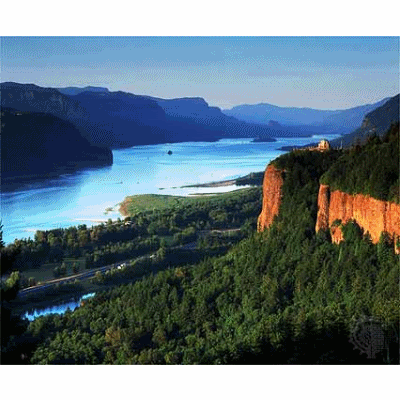♣ GROUP THREE ♣

♥♥♥♥♥♥♥♥♥♥♥♥♥♥♥♥♥♥♥♥♥♥♥♥♥♥♥♥♥♥♥♥♥♥♥♥♥♥♥♥♥♥♥♥♥♥♥♥♥♥♥♥♥♥♥
ALL ABOUT COLUMBIA RIVER :)
The Columbia River (known as Wimahl or Big River to the Chinook-speaking natives who lived on its lowermost reaches) is the largest river in the Pacific Northwest region of North America. It is named after the Columbia Rediviva, the first ship from the western world known to have traveled up the river. It stretches from British Columbia through Washington state, forming much of the border between Washington and Oregon before emptying into the Pacific Ocean. The river is 1,243 miles (2,000 km) long, and its drainage basin is 258,000 square miles (670,000 km2).
USES
1.The Columbia River Basin is the most hydroelectrically developed river system in the world.
2.Because of the 40-foot-deep channel in the lower river and slackwater lakes on the middle river, ocean freighters can navigate up the Columbia and Willamette rivers to Portland and barges can transport goods to the interior.
3.Recreation on the Columbia began early in the settlement era, with steamboat excursions up the Columbia from Portland, especially to the western end of the Columbia River Gorge. Sport fishing for salmon and steelhead developed as early as the 1920s and expanded with the increased use of power boats. Sailing, day cruising, swimming, water skiing, canoeing, and other water sports have become commonplace on the river since World War II.
PROBLEMS
1.There is also a problem with high levels of contamination by heavy metals in the river. These are metals such as arsenic, lead, mercury, copper, and cadmium just to name a few. Many industries are dumping metals in the river on a daily basis, which is causing these levels to rise everyday.
2.Another problem with toxins in the river is the newly found high levels of bacteria in the river. These levels tend to rise after heavy rain storms. Other causes of the bacteria rise in the river is the problem with overflowing sewage that flows over into the river.
3.In 1883 the cannery business hurt the salmon living in that area.
4.The level of dioxins and furans is very high. The levels of dioxin in the fish are so intense that the EPA has stated it is unsafe for human consumption. These dioxins can be cancer forming (carcinogenic). These unsafe conditions may be associated with the pulp and paper factories that are found along the river bend.
How does technology affects the columbia river?
People want the salmon, now almost extinct, to return to the river but that is impossible. Many believe the only solution is to remove the dams and the fish will return. Technology has led us to create an environment where the fish no longer survive, but can we return the river to its natural state.
Agriculture near columbia river.?
The Columbia River takes a 180-degree bend where it becomes the border with Oregon (lower half of the view in this north-looking scene). The Snake River enters the view from the northeast (top right) and joins the Columbia just below Ice Harbor Dam. Two distinct patterns of land use can be seen in this photograph. The green signature of irrigated crops (potatoes, vegetables, fruits, and hops) appears on floodplains flanking these rivers. On higher-lying flat landscapes beyond the reach of easy irrigation, agriculture is “rainfed.” In this summer-dry, semiarid part of the United States (rainfall less than 200 millimeters), upland fields are dormant and therefore yellow-brown in this late summer (September 1994) view. Winter wheat from the Columbia Basin is the state's leading dryland.
(C)opyright.
TWiLiGHT ™
ALL RIGHTS RESERVED 20o9.

0 Comments:
Post a Comment
Subscribe to Post Comments [Atom]
<< Home